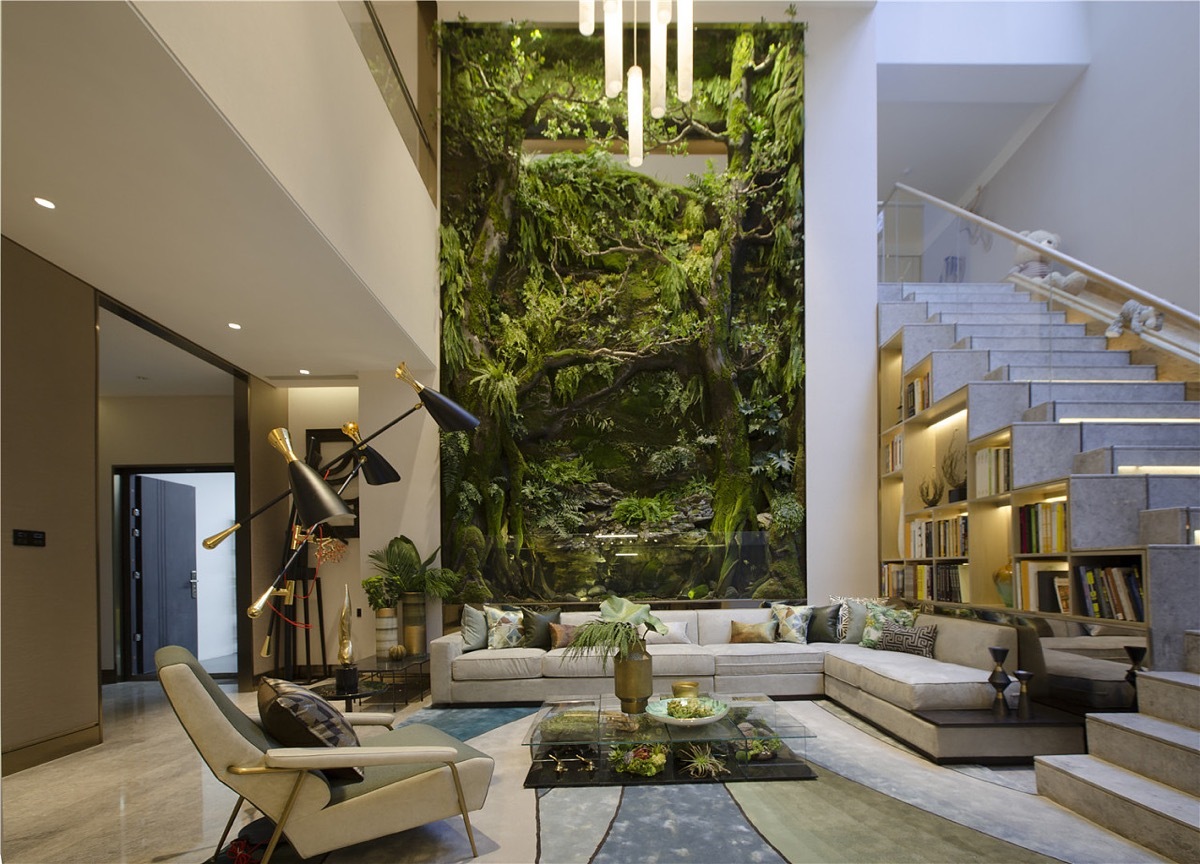PHOTO CREDIT: “Green Living Room” by Charly W. Karl, (CC BY-ND 2.0) with terrariums in the coffee table and within the large green wall.
As we stand near the dawn of a new decade, humans are more disconnected than ever from the natural environment. We spend most of our time away from nature, cooped-up inside our homes and offices. The natural environment plays a vital role in our mental and physical health. That’s why many designers are trying to bridge this disconnect by putting biophilic trends into modern buildings.

What is Biophilic Design?
The theory of “biophilia” is the brainchild of Harvard ecologist and sociobiologist Edward O. Wilson, which he defined as “the urge to affiliate with other forms of life,” (Biophilia, 1984). Crediting Wilson for his early research confirming man’s need for nature, Yale social ecology professor Stephen R. Kellert, Ph.D. also helped pioneer the emerging theory. Wilson and Kellert both suggest mankind needs more than food and sustenance from the world around them. Kellert’s work includes Nature by Design: The Practice of Biophilic Design, 2018.
Biophilic design allows architects and designers to combine the natural and modern worlds.
READ MORE AT: https://www.greenroofs.com/2019/02/20/biophilia-turning-conventional-architecture-inside-out/





